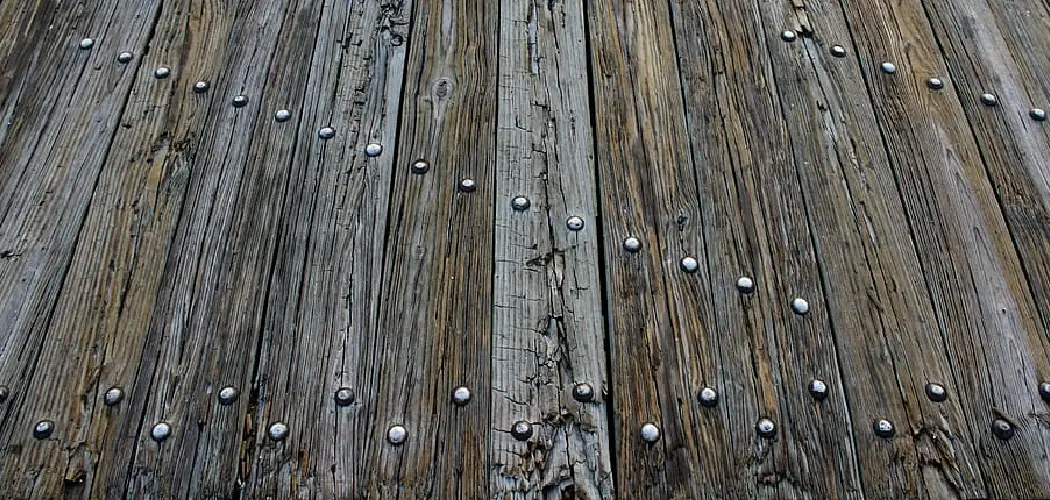Do you have a wooden deck in your backyard or patio? You likely are familiar with the stunning beauty of wood decks, but the aesthetic value isn’t the only thing you should consider when caring for them! Regular inspections will help maintain your deck’s structural integrity and safety by catching any rotten wood that may be present.
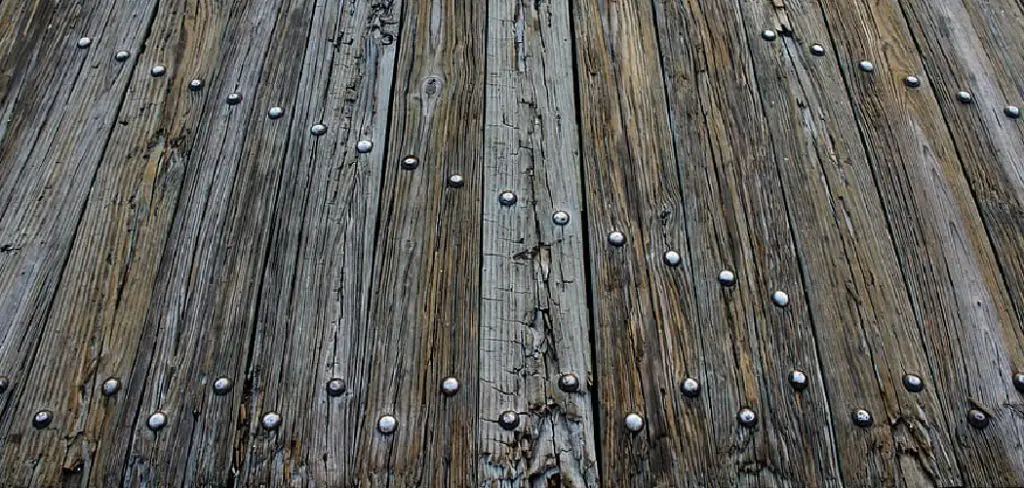
In this blog post on how to tell if deck wood is rotten, we’ll explain what to look out for so that you can easily identify if any part of your deck is rotten and take proper steps to replace it as soon as possible. By learning how to inspect a deck’s structure and recognize signs of rotting wood, you can make sure your outdoor space looks great while also remaining structurally safe. Read on to find out more!
Why Did the Deck Wood Become Rotten?
The most common cause of deck wood rot is prolonged contact with water, either from direct contact with rain or snow or from condensation caused by poor ventilation in the area. If your deck is exposed to moisture for an extended period of time, it can lead to rotting wood and weaken its structural integrity.
In order to prevent this from happening, you should ensure that all parts of your deck remain as dry as possible and get regular inspections to check for signs of rotting wood.
10 Step-by-step Guidelines on How to Tell if Deck Wood is Rotten
Step 1: Visually Inspect the Wood
Take a look at the wood itself and check for any visible signs of rot. This can include discoloration, warping, cracking or areas of surface damage. If you see any of these signs, there is a chance that the wood has been damaged by water and is rotting. This is particularly true if the wood appears soft or spongy when you touch it. It is also a good idea to look for other signs of water damage, such as stains or mold growth.
Step 2: Check For Structural Weakness
If you notice any signs of structural weakness, such as sagging or soft spots, this could be an indication that the wood is starting to rot. These areas of the deck should be checked more closely and pressure-tested with a hammer or screwdriver to identify any soft spots that could be caused by rotting wood.
Step 3: Examine Joists and Beams
Check all joists, beams, and other structural components for signs of rot. These pieces should be checked from both the top and bottom to ensure that any rotting wood is detected. Look for discoloration, cracks, or other signs of deterioration. If any part of a joist or beam appears soft or spongy, there is a good chance that the wood has been damaged by moisture and is starting to rot.
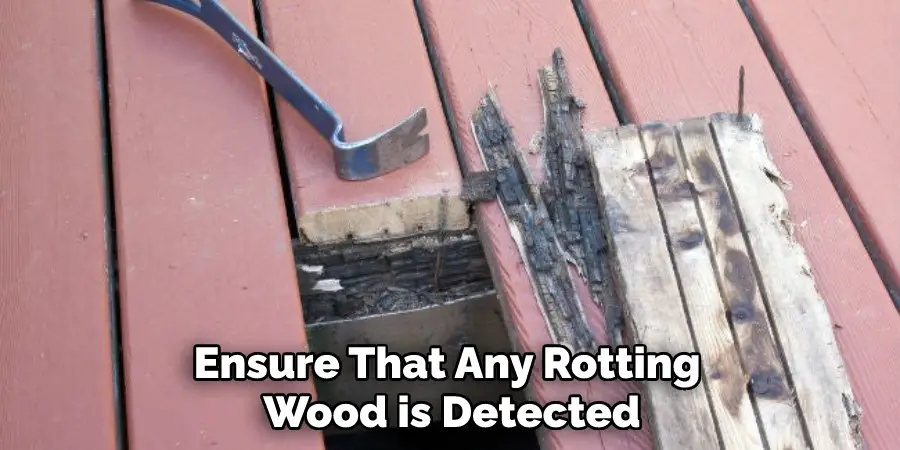
Step 4: Inspect the Railings and Posts
The railings and posts are usually made from pressure-treated lumber, which is less susceptible to rotting than other types of wood. However, it’s still important to look carefully for any signs of rot, such as soft spots or discoloration. If you notice any of these signs, it’s a good idea to test the strength of the railings and posts by pushing on them with your hands.
Step 5: Check for Insect Damage
Insects can cause significant damage to wooden decks, so it’s important to inspect all of the wood for signs of insect activity. Look for any small holes or tunnels that could indicate the presence of wood-boring insects. But keep in mind that these insects don’t always cause visible damage to the wood, so even if you can’t see any signs of them, it’s still important to check for signs of rot.
Step 6: Inspect the Fasteners
Any fasteners used to hold pieces of the deck together should also be inspected for signs of corrosion or other damage. Loose hardware may indicate that there is some rot present, so it’s important to check all of the screws and nails to ensure they are secure. This will help to ensure that the deck stays safe and secure.
Step 7: Check for Soft Spots
It’s also a good idea to look for any soft spots in the wood, which can indicate rotting material beneath the surface. Pressing on these areas with a screwdriver or hammer will help you determine if there is any rot present. If you notice any soft spots, it’s important to take steps to repair the damage as soon as possible.
Step 8: Look Underneath the Deck
Inspecting underneath the deck is an important step in determining whether or not there is decaying wood present. Look for any soft or spongy wood and discoloration that could indicate the presence of rotting material. But keep in mind that some of the wood may be covered with dirt, so you may need to use a shovel or other tool to remove any debris so you can get a better look at the wood underneath.
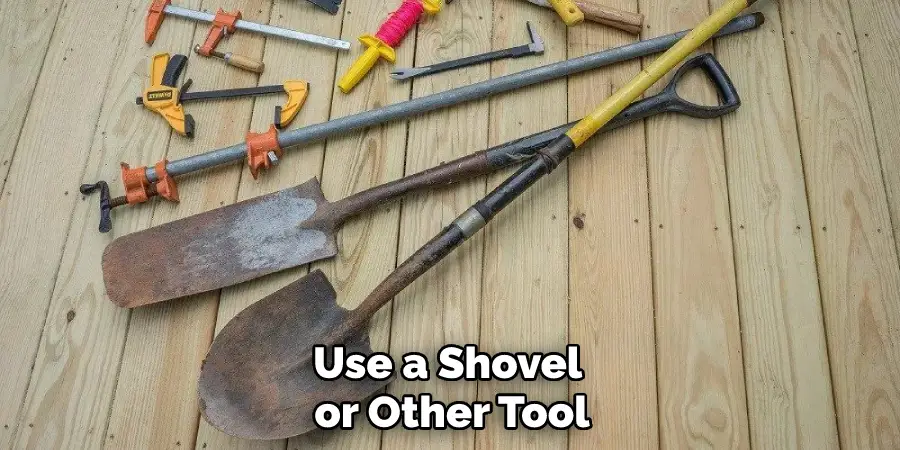
Step 9: Check for Exposed Nails or Screws
Any screws or nails that have been exposed to moisture can corrode, so it’s important to check them for signs of rust or other damage. If you find any rusty fasteners, they should be replaced right away as they may not hold together properly and could lead to further structural issues. This is especially important for screws and nails that are used to hold the deck together.
Step 10: Check For Foam Insulation Leakage
Foam insulation is often used in decks to help reduce heat loss and keep the wood from decaying. However, if the foam has become compromised due to water damage or exposure to the elements, it can allow moisture into the wood and cause rot. Remember to inspect for any signs of foam leakage and replace any damaged insulation immediately.
Following these steps on how to tell if deck wood is rotten can help ensure that your deck remains structurally sound and free from rot for years to come. Regularly inspecting your deck for signs of water damage and decay is important, as catching any issues early on can save you time, money, and hassle down the line. Taking preventive measures such as keeping your deck dry and sealed will also help protect it from rot in the long
Do You Need to Look for Professional Support?
If you find signs of rot, it’s important to hire a professional to assess the damage and determine what repairs or replacements need to be done. A professional can also advise you on preventive measures, such as sealing and waterproofing the wood, to help keep your deck in good condition for years to come.
Doing these assessments regularly can help keep your deck structurally sound and safe for you and your family to enjoy. These assessments can also help you avoid costly repairs down the line. Taking care of your deck now will give you peace of mind that it is safe and secure for years to come.
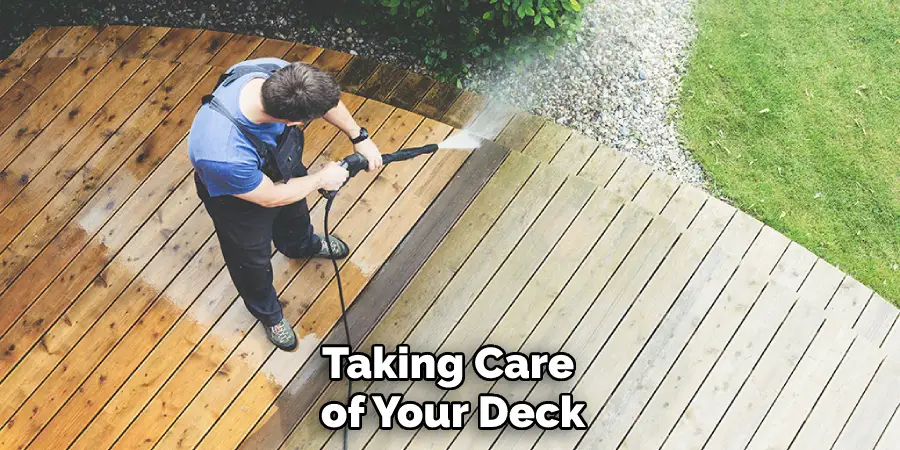
Frequently Asked Questions
Q: Can Pressure-treated Lumber Rot?
A: Pressure-treated lumber is typically treated with chemicals that make it more resistant to decay and rot. However, if the wood is exposed to excessive moisture or insects, this can accelerate the deterioration process. Regularly inspecting your deck for signs of water damage and decay will help ensure that your pressure-treated lumber stays in good condition.
Q: What Should I Do if I Find Rotting Wood on My Deck?
A: If you find rotting wood on your deck, it’s important to replace any affected pieces as soon as possible. Any fasteners that have become corroded due to moisture should also be replaced before the new pieces are installed. Additionally, it’s a good idea to apply a sealant or other protective coating to the new wood to help prevent future damage.
Q: How Can I Help Prevent My Deck From Rotting?
A: The best way to help prevent your deck from rotting is to keep it clean and dry. Regularly cleaning the surface of your deck with a brush and soapy water will help remove any dirt or debris that may cause rot in the long run.
Additionally, applying a sealant on an annual basis will help protect the wood from moisture and UV damage. Investing in waterproof furniture covers can also help shield your deck from moisture when not in use. Taking these preventive measures will go a long way toward extending the life of your deck.
Q: What Should I Do if My Deck Is Already Rotting?
A: If your deck is already rotting, it’s important to inspect the wood for signs of structural damage and replace any affected pieces as soon as possible. If the rot is extensive, you may need to tear down the deck and start from scratch. Inspecting your deck for water damage and decay on a regular basis can help you spot any potential issues before they become too severe.
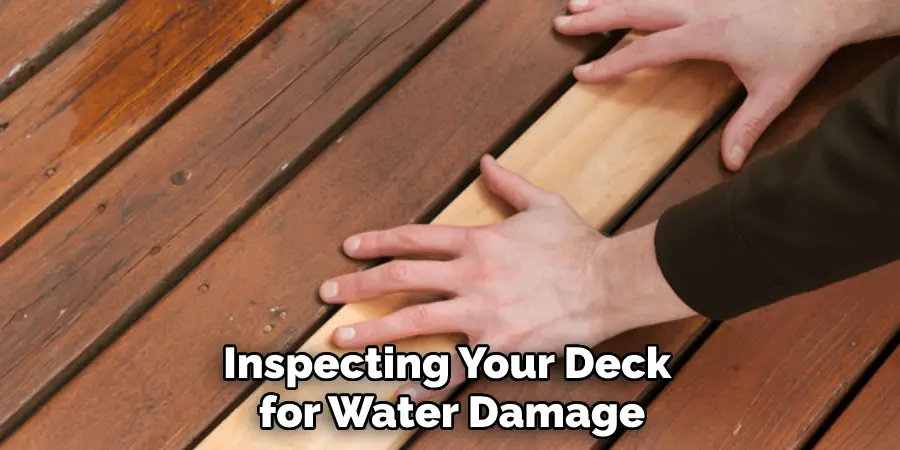
Conclusion
For homeowners, knowing how to tell if deck wood is rotten can save a lot of headaches and money in the long run. Don’t be afraid to use a hammer or screwdriver to check for soft spots or rot as this is an easy way to ensure that your wooden deck lasts you for many years. If you do notice some issues, have an expert come out and look at it right away, as it may not be structural damage yet and can be easily resolved with some basic repairs.
As always, remain vigilant in keeping up with any necessary maintenance on your wooden decks and if serious issues appear, address them quickly before they become more complicated and costlier. Taking the time to inspect and know what rotten wood looks like will help you keep your deck attractive – as well as safe – while also ensuring that it stands strong against the elements.

